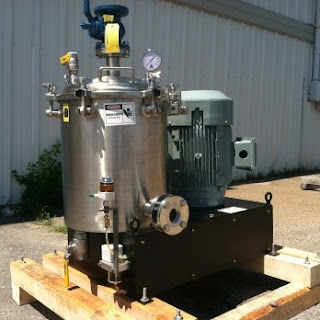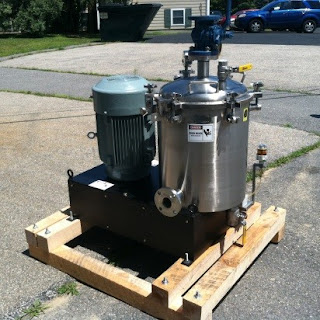Blenders and mixers often are mistaken for one another, and rightfully so they both do just about the same thing. So what is the difference between the two? Both mix or blender multiple materials into one complete mixture. But while the difference may be small, there are some subtle differences when it comes to mixing and blending. These differences, while minor are important to distinguish because it will make a difference based on the application you are looking to implement them in.
Mixing is more often used with mixing liquids with other liquids, gasses, or other viscous materials. While blending often deals with the mixing of solids and liquids or even solids with other solids. So while these two actions are fairly similar it is important to know how you might be using them, especially in the manufacturing world. If you purchase a machine that is designed for the mixing of two or more liquids and suddenly you throw a solid in there and expect the same result, you may end up damaging your machine and potentially wasting materials.
So in summary, mixing and blending are pretty interchangeable at the surface level or in day to day conversation. But when you get into the details and take into account the value they bring to manufacturing companies, it is important to distinguish between the two. Failing to do so may result in machine downtime, loss of materials and loss of profit.
Tuesday, August 11, 2015
Friday, August 7, 2015
Continuous Mills for the Water and Wastewater Industry
 These past several years we have been focused on designing and manufacturering high quality mills for one of the largest water and wastewater companies in the world. This project will put approximately 30 of our mills into the waste water industry this year and opens the door for more in the future.
These past several years we have been focused on designing and manufacturering high quality mills for one of the largest water and wastewater companies in the world. This project will put approximately 30 of our mills into the waste water industry this year and opens the door for more in the future.This project will see our mills all over the globe, the primary focus is the East Coast but a few of these mills will make their way to Singapore and the United Kingdom this year. This particular model is one of our standard models with 40 horsepower and can operate in the 5-50 gpm flow rate range. This makes it ideal for the water and wastewater application our client is using them for.
 We are proud to say that this type of continuous flow mill can be used in a number of different industries such as the paint, ink, paper, chemical, mining, minerals, and many more industries. We have been in the business for almost 70 years and with each new project we get more and more excited for the industries we are serving and the ways our clients are using all of our products from our continues flow mills to our top and bottom entry batch mills.
We are proud to say that this type of continuous flow mill can be used in a number of different industries such as the paint, ink, paper, chemical, mining, minerals, and many more industries. We have been in the business for almost 70 years and with each new project we get more and more excited for the industries we are serving and the ways our clients are using all of our products from our continues flow mills to our top and bottom entry batch mills.
Subscribe to:
Comments (Atom)